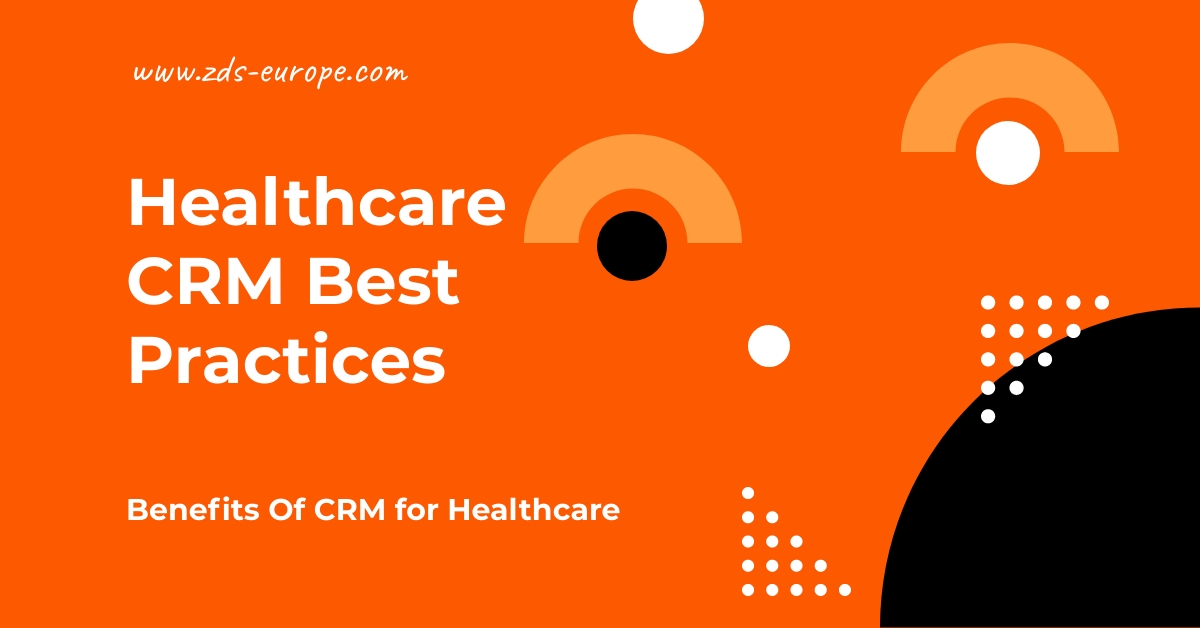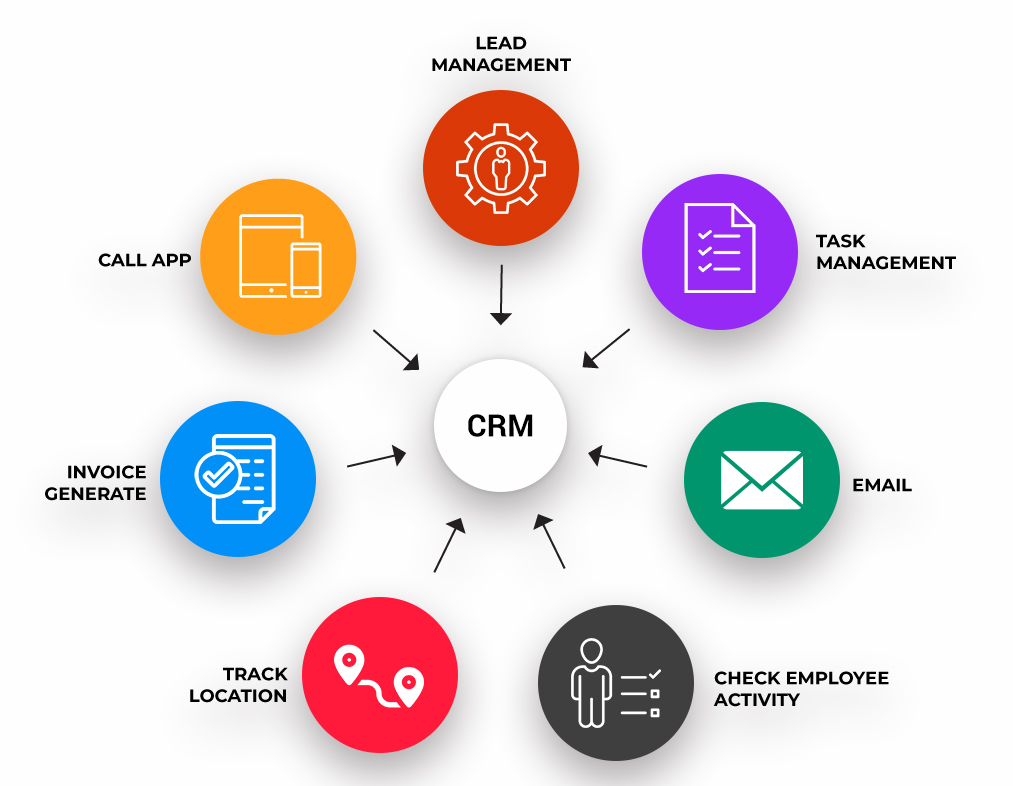
In today’s fast-paced digital landscape, businesses are constantly seeking innovative ways to connect with their audience, streamline their workflows, and ultimately, drive growth. One powerful strategy that has emerged is the integration of Customer Relationship Management (CRM) systems with visual design platforms like Canva. This dynamic combination allows marketing and sales teams to create compelling visuals, personalize customer communications, and gain a deeper understanding of their customer base. This article delves into the intricacies of CRM integration with Canva, exploring its benefits, practical applications, and how to implement it effectively to achieve remarkable results.
Understanding the Power of CRM and Canva
Before we dive into the specifics of integration, let’s establish a clear understanding of the individual strengths of CRM and Canva. CRM systems are the backbone of any customer-centric business. They provide a centralized platform for managing customer interactions, tracking sales pipelines, and analyzing customer data. Key features of a CRM include:
- Contact Management: Storing and organizing customer contact information, including names, email addresses, phone numbers, and social media profiles.
- Sales Automation: Automating sales processes, such as lead nurturing, follow-up emails, and deal tracking.
- Marketing Automation: Managing marketing campaigns, segmenting audiences, and personalizing communications.
- Reporting and Analytics: Tracking key performance indicators (KPIs), generating reports, and analyzing customer behavior.
Canva, on the other hand, is a user-friendly graphic design platform that empowers anyone to create professional-looking visuals. Its intuitive drag-and-drop interface, extensive library of templates, and vast selection of design elements make it accessible to users of all skill levels. Key features of Canva include:
- Template Library: Access to thousands of pre-designed templates for social media posts, presentations, marketing materials, and more.
- Design Elements: A wide range of images, illustrations, icons, and fonts to enhance visual appeal.
- Collaboration Tools: Ability to collaborate with team members on design projects in real-time.
- Brand Kit: Ability to store brand assets, such as logos, colors, and fonts, for consistent branding.
When you combine the robust data management capabilities of a CRM with the creative design power of Canva, you unlock a whole new level of marketing and customer engagement possibilities. This integration allows you to personalize your visuals, target specific customer segments, and create a cohesive brand experience across all touchpoints.
Benefits of CRM Integration with Canva
The integration of CRM with Canva offers a multitude of benefits for businesses of all sizes. Here are some of the key advantages:
Personalized Marketing Campaigns
One of the most significant benefits is the ability to personalize marketing campaigns. By leveraging customer data from your CRM, you can create visuals that resonate with specific customer segments. For example, you can create targeted social media ads, email newsletters, or website banners that feature products or services relevant to a customer’s interests and past purchases. This level of personalization leads to higher engagement rates, improved conversion rates, and a stronger connection with your audience.
Enhanced Customer Segmentation
CRM systems allow you to segment your customer base based on various criteria, such as demographics, purchase history, and engagement level. With Canva integration, you can design visuals that are tailored to each segment. For instance, you can create different email templates for new customers, existing customers, and lapsed customers, each with a unique message and design that resonates with their specific needs and interests. This targeted approach ensures that your marketing efforts are more effective and efficient.
Improved Brand Consistency
Maintaining brand consistency across all marketing channels is crucial for building brand recognition and trust. By integrating your CRM with Canva, you can ensure that your visuals adhere to your brand guidelines. You can store your brand assets, such as logos, colors, and fonts, within Canva, making it easy for anyone on your team to create on-brand visuals. This consistency helps to create a unified brand experience and reinforce your brand identity.
Increased Efficiency and Productivity
Integrating CRM with Canva streamlines your marketing workflow and increases efficiency. Instead of manually transferring customer data between systems, you can automate the process. For example, you can automatically populate customer information into Canva templates, saving you time and effort. This automation frees up your marketing team to focus on more strategic tasks, such as developing creative concepts and analyzing campaign performance.
Data-Driven Design Decisions
By connecting your CRM with Canva, you can gain valuable insights into your customers’ preferences and behavior. You can track which visuals perform best, which messages resonate most effectively, and which customer segments are most responsive to your marketing efforts. This data-driven approach allows you to make informed design decisions and continuously optimize your visuals for maximum impact.
Better Customer Engagement
Personalized visuals and targeted campaigns lead to better customer engagement. When customers feel like you understand their needs and interests, they are more likely to interact with your brand. This increased engagement can lead to higher click-through rates, improved conversion rates, and increased customer loyalty. Using visually appealing and relevant content will make your customers feel valued.
Practical Applications of CRM Integration with Canva
The possibilities for CRM integration with Canva are vast. Here are some practical applications:
Personalized Email Marketing
Create visually stunning email newsletters and promotional emails that are personalized with customer names, purchase history, and other relevant information. Use Canva templates to design email headers, banners, and graphics that are tailored to each customer segment. This personalization will make your emails more engaging and increase click-through rates.
Targeted Social Media Campaigns
Design social media ads and organic posts that are targeted to specific customer segments. Use Canva’s templates to create visually appealing graphics that highlight products or services relevant to each segment. You can also use your CRM to track the performance of your social media campaigns and optimize your visuals based on customer engagement data.
Dynamic Website Banners
Create dynamic website banners that display personalized content based on a customer’s browsing history, purchase history, or other CRM data. Use Canva to design eye-catching banners that are tailored to each customer’s interests. This personalization will make your website more engaging and increase conversion rates.
Customized Sales Presentations
Create sales presentations that are customized with customer-specific information, such as their company logo, industry data, and specific needs. Use Canva’s presentation templates to design professional-looking presentations that are tailored to each potential client. This personalization will increase your chances of closing deals.
Printable Marketing Materials
Design brochures, flyers, and other printable marketing materials that are personalized with customer information. Use Canva’s templates to create professional-looking materials that are tailored to each customer segment. This personalization will make your marketing materials more effective and increase brand awareness.
How to Integrate CRM with Canva
The specific steps for integrating your CRM with Canva will vary depending on the CRM system you use. However, the general process involves the following steps:
1. Choose the Right CRM and Canva Plan
Ensure that your CRM system and Canva plan support integration. Most popular CRM systems, such as Salesforce, HubSpot, and Zoho CRM, offer integrations with Canva. Canva offers various plans, including free and paid options. Choose a plan that meets your needs and budget.
2. Find the Integration Method
Determine the integration method that is available for your CRM and Canva combination. There are several options:
- Native Integration: Some CRM systems have native integrations with Canva, which means that the integration is built-in and easy to set up.
- Zapier or Similar Platforms: Zapier is a popular automation platform that allows you to connect different apps and automate workflows. You can use Zapier to connect your CRM with Canva.
- API Integration: If your CRM and Canva offer APIs, you can develop a custom integration. This option provides the most flexibility but requires technical expertise.
3. Set Up the Integration
Follow the instructions provided by your CRM and Canva to set up the integration. This typically involves authorizing the connection between the two platforms and configuring the data that will be shared. This might involve inputting API keys, or logging in to both accounts.
4. Test the Integration
Once the integration is set up, test it to ensure that it is working correctly. Create a test design in Canva and populate it with data from your CRM. Verify that the data is being transferred accurately and that the visuals are being displayed as intended. This is to ensure everything is working as planned.
5. Train Your Team
Train your marketing and sales teams on how to use the integrated system. Provide them with instructions on how to create personalized visuals, segment their audience, and track campaign performance. Make sure everyone is on the same page.
Best Practices for CRM Integration with Canva
To maximize the benefits of CRM integration with Canva, follow these best practices:
1. Define Your Goals
Before you start integrating your CRM with Canva, define your goals. What do you want to achieve with this integration? Do you want to increase engagement rates, improve conversion rates, or enhance brand consistency? Having clear goals will help you to prioritize your efforts and measure your success.
2. Segment Your Audience
Segment your audience based on various criteria, such as demographics, purchase history, and engagement level. This segmentation will allow you to create targeted visuals that resonate with each segment. Segmenting your audience will provide a more tailored experience.
3. Personalize Your Visuals
Personalize your visuals with customer names, purchase history, and other relevant information. This personalization will make your marketing efforts more engaging and increase customer loyalty. Ensure that the visuals are tailored to the individual.
4. Use Brand Templates
Create brand templates in Canva to ensure that your visuals adhere to your brand guidelines. This will help to create a cohesive brand experience and reinforce your brand identity. Having consistent branding is key.
5. Track Your Results
Track the performance of your marketing campaigns and analyze the results. Use your CRM to track key performance indicators (KPIs), such as click-through rates, conversion rates, and customer engagement. Use the data to optimize your visuals and improve your results. Track what is working and what is not.
6. Automate Your Workflow
Automate your workflow to save time and increase efficiency. Use your CRM to automatically populate customer information into Canva templates. Automating your workflow will save you time and effort.
7. Regularly Update Your Designs
Keep your designs fresh and up-to-date. Regularly update your visuals to reflect changes in your brand, products, or services. This will help to keep your audience engaged and interested.
8. Train Your Team
Provide your team with training on how to use the integrated system. Ensure that they understand the benefits of CRM integration with Canva and how to create personalized visuals. Train your team to provide them with the best tools.
Examples of Successful CRM and Canva Integration
Many businesses have successfully integrated their CRM systems with Canva to enhance their marketing efforts. Here are a few examples:
Example 1: E-commerce Business
An e-commerce business uses its CRM to segment its customers based on their purchase history. They then use Canva to create personalized email newsletters that feature products relevant to each customer’s past purchases. This personalization has led to a significant increase in click-through rates and conversion rates.
Example 2: Real Estate Agency
A real estate agency uses its CRM to track leads and manage client relationships. They then use Canva to create personalized property flyers and social media posts that are tailored to each client’s needs and interests. This personalization has helped the agency to close more deals and build stronger relationships with its clients.
Example 3: SaaS Company
A SaaS company uses its CRM to track customer engagement and identify churn risks. They then use Canva to create personalized onboarding materials and customer success stories that are tailored to each customer’s needs and goals. This personalization has helped the company to reduce churn and increase customer lifetime value.
These examples demonstrate the versatility and effectiveness of CRM integration with Canva. By leveraging the power of both platforms, businesses can create more engaging marketing campaigns, build stronger customer relationships, and drive significant business growth.
Troubleshooting Common Issues
While CRM integration with Canva offers numerous benefits, you may encounter some common issues during implementation. Here’s how to troubleshoot them:
1. Data Synchronization Problems
If data isn’t syncing correctly between your CRM and Canva, double-check the integration settings. Ensure the correct fields are mapped and that the data formats are compatible. If you’re using an API or a third-party platform, review its documentation for troubleshooting steps. Sometimes, a simple refresh of the connection will do the trick.
2. Template Formatting Issues
When importing data into Canva templates, formatting issues might arise. Make sure the text boxes in your Canva templates are large enough to accommodate the imported data. Test with sample data to identify any layout problems. Consider using dynamic text fields that automatically adjust to fit the content.
3. User Permissions and Access
Ensure that all team members have the necessary permissions in both your CRM and Canva accounts to access and utilize the integrated features. Review user roles and access levels to prevent any limitations. This is especially important when dealing with sensitive customer data.
4. Connection Errors
If you experience connection errors, verify your internet connection and check the status of both your CRM and Canva platforms. Sometimes, a temporary outage or maintenance can disrupt the integration. Consult the support documentation of your CRM or Canva for specific troubleshooting steps.
5. Slow Performance
If the integration slows down your workflow, consider optimizing your data transfer settings. Reduce the amount of data being synced or schedule the syncs during off-peak hours. Also, ensure that your CRM and Canva accounts have sufficient resources allocated to handle the integration.
6. Incorrect Data Mapping
Double-check that your CRM fields are correctly mapped to the corresponding fields in your Canva templates. Incorrect mapping can lead to inaccurate data being displayed. If you’ve recently updated your CRM fields, be sure to update the mapping accordingly.
7. API Limits
If you’re using API integrations, be aware of any rate limits imposed by your CRM or Canva. Exceeding these limits can cause errors or delays. Optimize your data transfers to stay within the limits. Consult the API documentation for details.
The Future of CRM and Canva Integration
The integration of CRM with Canva is constantly evolving, with new features and capabilities being added regularly. Here are some trends to watch out for:
AI-Powered Design Automation
Artificial intelligence (AI) is playing an increasingly important role in design automation. Expect to see more AI-powered features that can automatically generate visuals based on customer data and marketing objectives. This could include AI-powered template suggestions, personalized image generation, and automated design optimization. AI will assist in making the process more efficient.
Enhanced Personalization Capabilities
As personalization becomes more critical, expect to see more advanced features that allow businesses to create highly personalized visuals. This could include features that allow you to dynamically generate visuals based on real-time customer data, such as location, weather, and browsing behavior. This would make the visuals even more targeted.
Deeper Integration with Marketing Automation Platforms
CRM and Canva are already being integrated with marketing automation platforms to streamline the marketing workflow. Expect to see even deeper integration, with features that allow you to automatically trigger Canva designs based on customer behavior and marketing campaign performance. This will allow for greater automation.
Expanded Collaboration Tools
Collaboration is essential for creative teams. Expect to see more advanced collaboration tools that allow teams to work together seamlessly on design projects. This could include features like real-time co-editing, version control, and integrated feedback tools. Collaboration will be key.
Integration with Emerging Technologies
The integration of CRM with Canva is expanding to include emerging technologies, such as augmented reality (AR) and virtual reality (VR). This could include features that allow businesses to create AR and VR experiences that are personalized with customer data. This will create new ways to engage with customers.
These trends highlight the exciting possibilities for CRM integration with Canva. As technology continues to evolve, businesses can expect even more powerful tools and capabilities that will help them to create compelling visuals, personalize customer communications, and drive significant business growth.
Conclusion
CRM integration with Canva is a powerful strategy for businesses looking to enhance their marketing efforts, improve customer engagement, and drive growth. By leveraging the strengths of both platforms, businesses can create personalized visuals, target specific customer segments, and create a cohesive brand experience across all touchpoints. The benefits of this integration include personalized marketing campaigns, enhanced customer segmentation, improved brand consistency, increased efficiency, and data-driven design decisions. By following the best practices and staying up-to-date on the latest trends, businesses can unlock the full potential of CRM integration with Canva and achieve remarkable results. The combination of CRM and Canva is a match made in marketing heaven, and the possibilities are truly endless. So, embrace the power of this integration and take your marketing to the next level! It’s a game changer!


